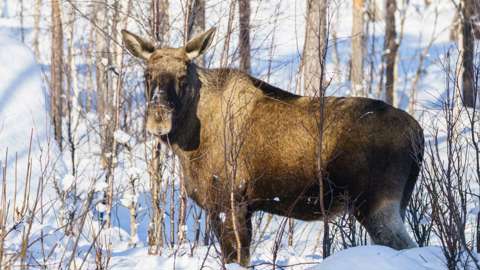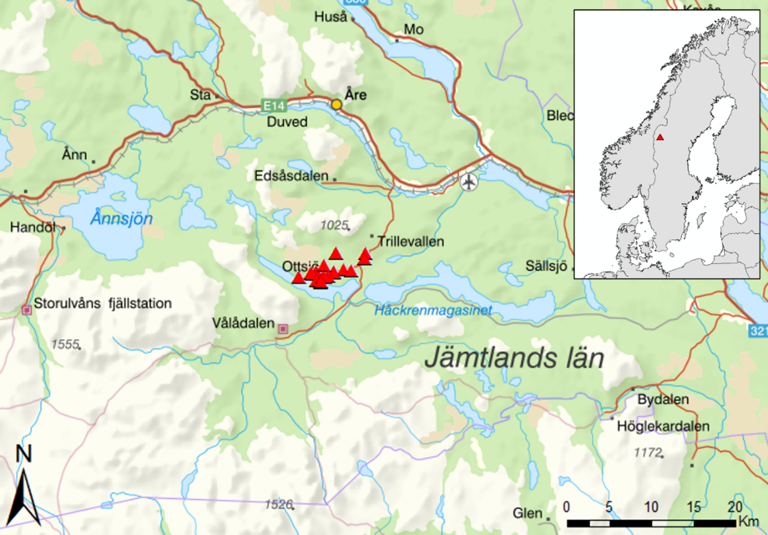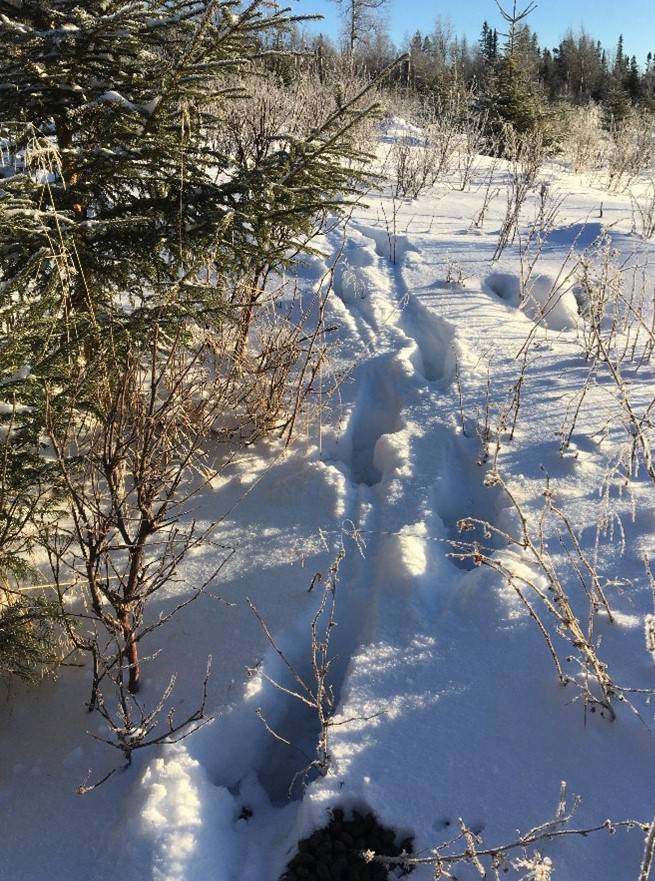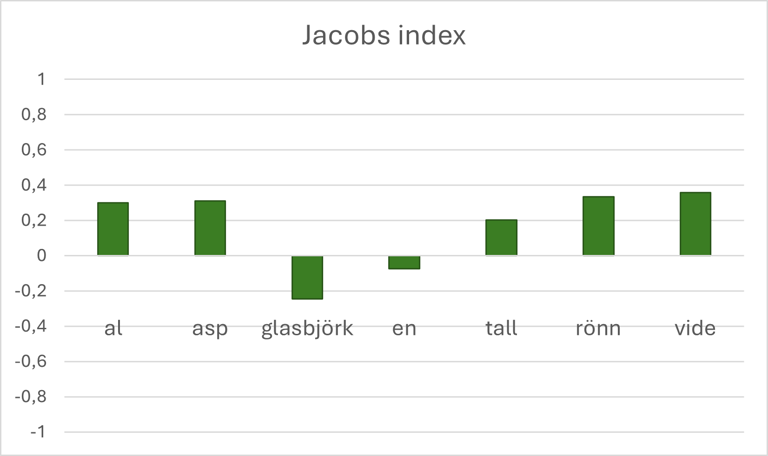Moose Winter Browsing in Mountain-Adjacent Spruce and Birch Forests

Browsing by ungulates on trees and other plants reflects not only the feeding choices of the browsing animals but also, to a large extent, differences in availability and forage value among various plant species. A new study investigated winter browsing by moose (Alces alces) in a mountain-adjacent forest landscape in western Jämtland, near Ottsjö. Unlike the vast majority of research studies on moose browsing in Fennoscandia, this study does not focus on young pine forest but rather on spruce (Picea abies) production forests with a high proportion of deciduous trees. The overarching research question has been what moose eat during winter from what is available in mountain-adjacent forest of two different age classes.
The results below in the article are a summary. Read the published study here: Winter browsing by moose (Alces alces) in a forested mountainous landscape of west–central Sweden
Browsing and tree species inventoried in Jämtland in norht-west of Sweden
he field study was conducted during January and February 2023 and consisted of inventories along moose tracks and randomly placed control transects in both young forest (tree height <6 m) and older forest (tree height ≥6 m). Data were collected on:
- the presence of different tree species, and
- moose browsing on trees and berry shrubs.
Along moose tracks, only very fresh browsing was recorded, assuming that the moose being tracked had done the browsing. Along both moose tracks and control transects, data were also collected on previous browsing. Statistical analyses were mainly conducted using modelling with the method Generalized Linear Mixed Models (GLMM).

Figure 1. Map of the study area and the location of the inventoried transects.
Forage trees more common in young forest
The study placed particular focus on forage trees, defined as trees <5 m tall, a height often cited as a hypothetical threshold where:
- the amount of available (i.e., <2.5 m) shoots on a tree is too low for the tree to serve an important function as a forage tree, and
- shoot browsing no longer significantly affects the tree.
The results revealed a greater total amount of forage trees in young forests compared to older forests and along moose tracks compared to control transects. Downy birch (Betula pubescens) was the most common tree species regardless of forest age class and transect type (i.e., moose track versus control). Quantitatively, the most important winter forage in the study area was a mix of deciduous tree species, primarily downy birch and willow species (Salix spp.), supplemented with aspen (Populus tremula) and grey alder (Alnus incana). Nine forage trees of pine were recorded, eight of which were found along moose tracks and one along a control transect.

Figure 2. A moose track followed during the inventory. Photo: Ella Hambeson
Downy birch underutilized
In young forest, aspen, rowan (Sorbus aucuparia), and willow were the most selected species, while juniper (Juniperus communis) was the least selected, apart from spruce and lodgepole pine (Pinus contorta), which had no fresh browsing at all. In older forest, alder was most selected, followed by willow and rowan, while aspen and downy birch were least selected, apart from spruce and lodgepole pine. According to Jacobs’ selectivity index, downy birch was generally underutilized, while aspen, rowan, willow, and pine were overutilized relative to their availability. The snow cover was relatively thin (0.1–0.5 m) and did not appear to affect the moose’s choice of feeding paths. However, the study showed that paths with previous browsing were revisited more frequently than by chance. Browsing on berry shrubs was not observed anywhere.

Figure 3. Jacobs’ selectivity index, a measure of how different forage types are selected by browsing moose. A positive value means it is selected more than proportionally to its availability, and a lower value means it is selected less than proportionally to its availability. Al=Alder, Asp=Aspen, Glasbjörk=Downy birch, En=Juniper, Tall=Pine, Rönn=Rowan, Vide=Willow.
Pine holds a special position as a forage tree for moose during winter in Fennoscandia. The main reasons usually cited are that it is available in large quantities and retains high green biomass during winter compared to deciduous trees. This study shows that pine can be a selected tree species under certain conditions. The most common forage tree, downy birch, was consumed in large quantities but avoided in favor of other, more uncommon deciduous trees. Several of the deciduous trees in the study, especially aspen, rowan, and willow, are often limited in today’s cultivated forest landscape and thus an increased amount of these species may be utilized more by moose than an increased amount of downy birch.
More studies are needed to understand the role of berry shrubs as winter forage for moose in parts of Sweden where the ground is snow-covered for large portions of the year.
We will review and publish your comment as soon as possible.





